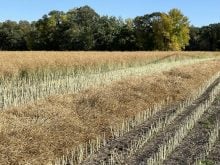Grain and oilseed markets had their ups and downs in 2024, with wars, labour unrest, trade disputes and politics often providing more direction than the traditional supply/demand fundamentals.
While the outlook is murky for 2025, expect similar outside forces to remain a feature in the year ahead.
Russia/Ukraine: The conflict moved through its third year with no end in sight. Attacks on grain handling facilities, difficulties shipping through the Black Sea and shifting production estimates out of both countries were followed closely by traders. Russia remains a major player in the global export market, but production uncertainty for the current winter wheat crop may limit that influence over the next year.
Read Also

Riding market swings can add farm profit
Regular price trends in the grain market can help farmers pinpoint how and when to sell their grain with more confidence, analyst says
Middle East: The Israeli war against Hamas in Gaza sparked wider disputes across the region. Resulting turmoil in energy markets was also felt in grains and oilseeds, while trade through the Red Sea and Suez Canal was hampered.
Panama Canal: Low water levels at the Panama Canal created additional headaches for global grain movement in 2024, although that congestion eventually started to clear. The Baltic Dry Index, which provides an indication of global bulk shipping rates, was at its lowest level in 17 months in December. Lower rates are generally beneficial for Canadian grain exports because the country is at a freight disadvantage into many markets.
Labour disputes: Labour unrest was a feature of the Canadian grain trade in 2024, with strikes and/or lockouts at both coasts and at both major railways.
China: China began an anti-dumping investigation into Canadian canola in the fall. China remains the largest export customer heading into the New Year, but the threat of another trade dispute between the two countries is ever present.
Trump: Trump’s new administration is bound to generate headlines through 2025, but his proposed policies already riled agriculture markets ahead of his inauguration. Most notably, import tariffs and resulting retaliation could dramatically alter international trade flows. Uncertainty over U.S. biofuel policy was also overhanging the markets as the calendar flipped to 2025.















